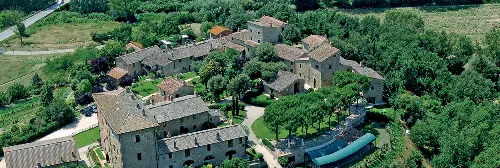
Designing renovation projects
Interview to Davide Bandera, product manager for masonry restoration.
Interview to Davide Bandera, product manager for masonry restoration to discuss over restoration and redevelopment work on existing buildings, including those of historical interest.
The current crisis in the Italian building industry has been partially off-set by the demand for restoration and redevelopment work on existing buildings, including those of historical interest. What are the main phases you have to deal with when redeveloping an historical building?
Very often we tend to assume we are perfectly aware of all the phases that need to be carried out when we start working on a restoration and conservative renovation project for a building. Unfortunately this is only true in part, because sometimes we can overlook certain important issues at the start of the project, such as the importance of carrying out a visual analysis of the site (phase I) to gather all the useful information you need about the building and the materials it was built from, as well as its state of conservation.
Where necessary, if you need to obtain a deeper understanding of the structure to be restored, you can carry out a diagnostic analysis (phase II) through numerous, complex chemical analyses to identify the level of damage in the materials and the causes behind the damage in order to approach and direct the restoration and conservative renovation work in the most appropriate way.
Phase III, on the other hand, concerns the choice of materials. This phase is of vital importance in restoration work, in that it must be carried out so that the chosen product and/or system is reversible and compatible with the materials originally used to construct the building. The term “reversible” is normally used to identify a process that can be inverted and, as far as a product is concerned, it means it may be removed without causing any damage to the structure. The term “compatible”, on the other hand, is associated with a product and identifies its chemical-physical and elastic-mechanical affinity to the properties of the original materials. Choosing a product incompatible with the materials and construction techniques used in the past can result in an intervention being unsuccessful or its sudden deterioration. The products closest to meeting these requirements are lime-based ones because they respect traditional construction methods, in that all buildings of historical and artistic interest were built using these types of materials. Allow me to digress briefly. There are numerous products available on the market which are defined as lime-based, but then you find they contain Portland cement. The use of cement in restoration work should be limited to those areas where you require different performance properties than those possible using lime only and, in all cases, where there is no risk of damaging the masonry or surfaces, which sometimes are decorated with frescoes. Saying a product is lime-based does not necessarily exclude the possibility of there being cement in that particular product. A more precise indication of the type of binder contained in the product can be had by reading its material safety data sheet, which must contain a list of all the components contained in it that require a hazard warning symbol.
Phase IV, which is no less important than the previous ones, is the phase in which the application techniques and methods are defined. This depends on the type of product chosen, which must be applied correctly and according to the recommendations supplied by the manufacturer.
The starting point when designing a restoration intervention, therefore, must be a visual analysis of the construction materials. In order to identify the most appropriate solutions, which diagnostic and fact-finding tests need to be carried out on the substrates and on their degree of deterioration?
Various diagnostic tests are available, some of which can be quite complex, and they may be carried out directly in situ or in specialised laboratories, in this case on samples taken on site. These analyses are carried out to define the degree of deterioration of a building and its causes. In other cases, just to mention a couple of examples, analyses are carried out to determine the chemical and physical composition of render or masonry mortar, as well as the presence of soluble salts. Other analyses may be carried to establish the stratigraphic layout of the skimming compound or paint that has been applied over the years or the nature of the pigment originally used.
In Mapei there is a cutting-edge Research & Development laboratory, equipped with highly sophisticated instruments, where the tests mentioned previously are often carried out, as well as many others to provide additional support for design engineers and prescribers of technical specifications, or even restoration companies. The Mapei R&D laboratories often collaborate with universities and the academic world in general, as well as with engineers and technicians from heritage bodies and local councils.
For years Mapei Group has been proposing a range of solutions and systems suitable for consolidating and designing historic and artistic structures in order to respect the historical value of the original materials and the type of substrate. If you had to mention just one, which range of products and systems would come to mind?
In 1992 Mapei introduced a range of products called MAPE-ANTIQUE, a term used to indicate a series of materials for historical buildings.
Over the years, this range has been extended until we now have a complete range of products and systems dedicated to the consolidation, restoration, strengthening and protection of existing buildings, including those of historical and artistic interest under the protection of the National Trust.
The products form the MAPE-ANTIQUE line, which are made from lime and Eco-Pozzolan and are totally cement-free, have very similar characteristics to the masonry mortars and renders used in the past and, as such, are more compatible with any type of original structure. Unlike mortars normally used for repair work, such as those made from hydraulic lime and natural hydraulic lime which have levels of residual “free lime” for a longer period of time (see UNI 459-1), the reaction between lime and Eco-Pozzolan leads to the formation of compounds, whereby the “free lime” is completely “consumed” after just a few days, so that restoration mortar and injected slurries are completely resistant to the soluble salts present in masonry. It is quite the opposite for the mortars mentioned above which, even though they be sufficiently porous and mechanically compatible with the materials originally used, they are not immune to the risk of chemical aggression from soluble salts dissolved in the water.
Indeed, the “free lime” contained in these materials could react chemically with the soluble salts in the masonry and with other components contained in the original mortar, or in mortar used for previous repair work, causing the render to crack and/or crumble.
With the products in the MAPE-ANTIQUE line, on the other hand, this phenomenon does not occur because there is absolutely no “free lime”. From a morphological point of view, it is thanks to this particular characteristic that the structure of the products from the MAPE-ANTIQUE is similar to that of “historical mortar” made from aerated lime and Pozzolan, but which only forms after a number of years.
One of the problems with historical buildings is the damage to their masonry by aggressive atmospheric agents or the crumbling action of salts and damp. Mapei has developed a series of highly innovate products and systems to tackle these types of problem. Which are they and when may they be applied?
Amongst the most widely used techniques adopted in the presence of capillary rising damp and soluble salts are horizontal chemical barriers and the application of dehumidifying render.
The chemical barrier technique consists of injecting chemical products into the masonry and these are normally silane-based or siloxane-based, an example of which is our MAPESTOP. This product has the capacity to form a “horizontal barrier”, which has a water-repelling effect against the rising damp, without having any effect on the levels of breathability within the masonry itself. Apart from “blocking” the damp below the treated zone, these formulates must also have properties whereby the salts are blocked and transformed into non-soluble products to prevent them migrating within the structure. These products are injected at low pressure using a suitable injection pump, or by gravity using diffusers (the MAPESTOP KIT DIFFUSION, for example). One of the limits with this type of intervention is that you can never be absolutely certain that the chemical spreads inside the structure and, as a result, all the porosity in the bricks, stone, tuff and mortar used to construct the wall may not have been hydrophobised. This means there could be the “passage”, albeit somewhat limited, of the damp and soluble salts through the points where the chemical barrier wasn’t able to penetrate, going on to damage the layer of render if it has been made from traditional cementitious-based or lime and cement-based mortar.
As far as dehumidifying render is concerned, on the other hand, it is made in such a way that it “helps” or “encourages” the water to migrate towards the outside and stops it stagnating inside the masonry. To obtain this condition, all dehumidifying renders are made up of macro-pores within their structure which work together with the pre-existing porosity and considerably increase the natural breathability and evaporation capacity of the masonry.
Another important characteristic that dehumidifying renders must possess is their chemical resistance to soluble salts dissolved in the water or, in the case of buildings close to the sea, to salts coming from the outside in the form of marine aerosol. This latter property is extremely important in determining the durability of the intervention. So, using traditional render that is not chemically resistant to salts leads to their immediate deterioration. Some of the products from the MAPE-ANTIQUE line are in the category of macro-porous dehumidifying renders resistant to soluble salts.
So is the use of these products also recommended for buildings in lagoon environments or close to the sea?
Absolutely! In every city close to the sea, certain buildings will be more affected than others by both damp and soluble salts, either present in the seawater or transported in the form of marine aerosol onto the façades of the buildings.
In such cases, the application of dehumidifying render becomes an indispensable condition to guarantee the durability of restoration work. This type of system, however, must be extended to the entire façade, in that the maximum chemical resistance to soluble salts must also be guaranteed in the areas above those actually affected by capillary rising damp. The salts, in fact, are transported by marine aerosol and are deposited over the entire façade and if you use render that isn’t resistant to the chemical aggression induced by the chlorides in the seawater, the quality of the intervention would be compromised.
Another aspect that should never be underestimated is which finishing product to use and it must be one that is appropriate for the cycle. The optimum solution is a mineral-based finish that does not impede the passage of water vapour from inside the masonry towards the outside and that does not affect the characteristics and properties of the dehumidifying render used. This category includes the finishes from the SILEXCOLOR line, potassium silicate-based products that comply with DIN 18363 standards.
An alternative to these products, in those cases where a finish with a higher level of breathability and water-repellence is required, would be to use one of the coloured paints or coatings from the SILANCOLOR line, siloxane-based products which are applied in thin coats. This last category of finishes offer more protection for the underlying masonry and render and impede the ingress of marine aerosol.







